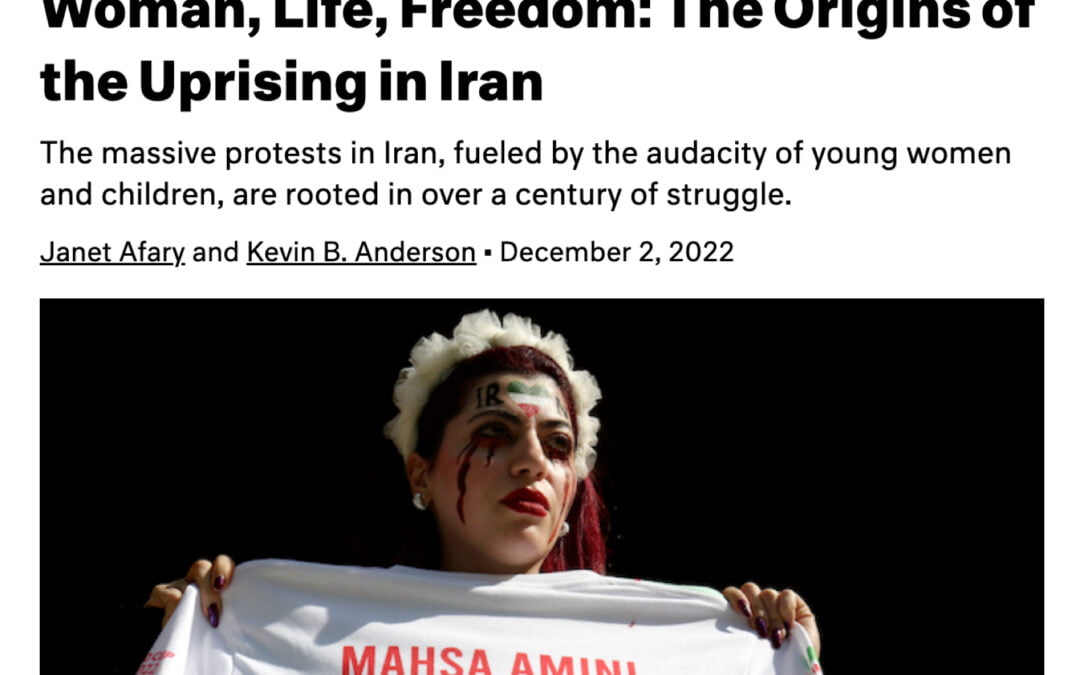In March, 1979, urban Iranian women and girls and their male supporters took part in a week of demonstrations in Tehran, beginning on International Women’s Day, to protest the new Islamist regime’s edict compelling women to wear hijabs. The demonstrators expressed a deep sense of betrayal at the direction being taken by the Iranian revolution, then just weeks old. “In the dawn of freedom, we have no freedom,” they chanted. Their ranks grew by the day, reaching at least 50,000. The movement attracted international solidarity, including from Kate Millet, who famously traveled to join them, and Simone de Beauvoir. At home, Iranian feminists gained support from the People’s Fedayeen, a Marxist-Leninist group which had engaged in armed resistance against the American-backed monarchy before it was overthrown by the revolution. For a few days, the Fedayeen formed a protective cordon, separating the protesters from crowds of Islamists who were trying to physically attack them. But in time, influenced by a visiting Yasser Arafat and others, the Fedayeen withdrew its support for fear of weakening the revolution at a time when, it was widely believed, the U.S. government was ready to pounce and restore the shah. Over the next few years, the Iranian feminist movement seemed to die, or at least go underground.
[This article will appear in Dissent‘s Winter 2023 issue, out in January. To get your copy, subscribe now. ]
See the Full Article in DISSENT.
Translations:
- French: Femme, vie, liberté : les origines du soulèvement en Iran
- Italian: Donna, vita, libertà: le origini della rivolta in Iran
- Turkish: Kadın, Yaşam, Özgürlük: İran’daki Ayaklanmanın Tarihi Kökenleri


